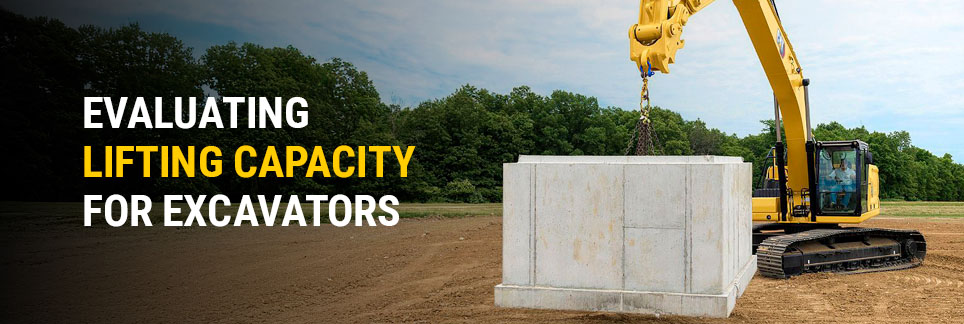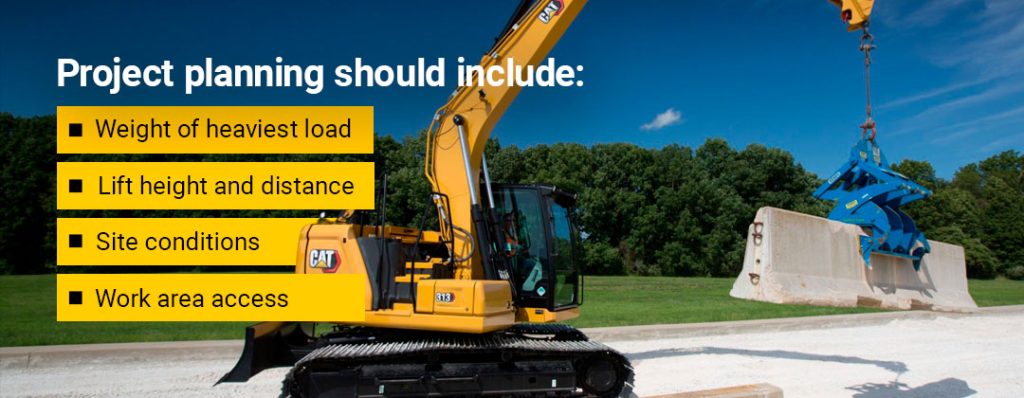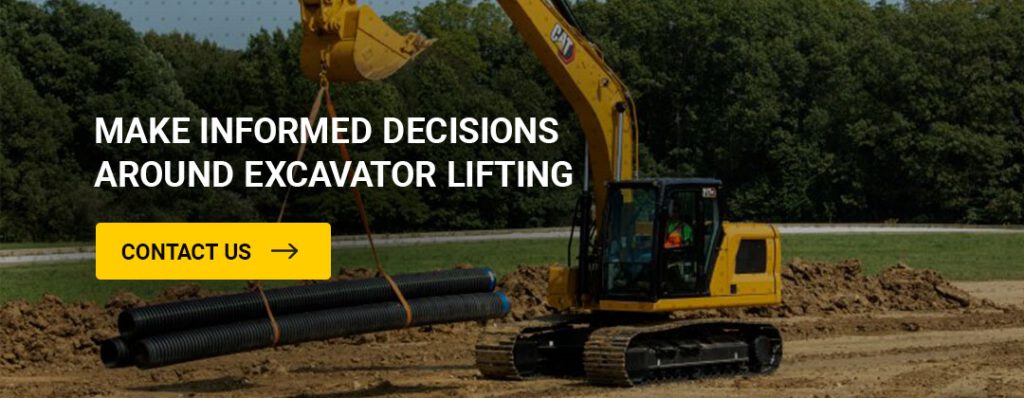
Knowing how much your excavator can safely handle is essential, whether you’re lifting pipes, trench boxes or debris. Misjudging raising capacity can damage equipment, cause operational delays or lead to serious safety accidents.
Below, we evaluate the lifting capacity for excavators and how to match machines to site requirements.
Before you lift anything, you need to know what your machine can handle. That’s where lift charts come in. These manufacturer-issued charts spell out the weight limits for your excavator at different heights, distances and positions.
These charts show how much weight the machine can safely hoist under specific conditions. Lift charts are available in operator manuals and must be referenced before raising anything. They are the foundation for safe load planning.
Lift charts typically list:
Lift charts assume perfect conditions. On a real site, things are rarely perfect.
These real-world factors often reduce actual hoisting capacity:
Each of these elements should be considered before beginning lifting operations, especially when working in high-risk or confined environments.
Lifting isn’t just about getting the job done. It’s about doing it safely. The Occupational Safety and Health Administration (OSHA) has clear standards for safely performing lifts, and adhering to them protects both people and equipment.
Best practices for safe excavator hoisting include:
Every job has different lifting needs. Knowing the maximum load and conditions you’ll be handling is the first step in choosing the right excavator.
Selecting the appropriate excavator begins with clearly understanding the project’s lifting demands. Hoisting undersized or improperly configured equipment can cause delays, mechanical damage or safety violations.

Project planning should include:
Mini excavators can be surprisingly strong for their size, but they do have their limitations:
Your team will need to account for mini excavator lifting capacity limitations in equipment selection.
Attachments add versatility, but they also change how your excavator handles weight. They can shift the balance of the machine or add extra weight that eats into your lift limit.
Standard raising attachments include:
When using attachments on your site, it’s essential to consider three key things:
Before lifting with a bucket, perform an excavator bucket capacity calculation to estimate material weight and verify it against the lift chart.
Get your pressing questions on evaluating lifting capacity for excavators answered.
Excavators can lift various weights, depending on factors such as their size, configuration and site conditions. For example, a mini excavator may hoist 1,500 to 2,500 pounds, while larger excavators might be able to handle 12,000 pounds or more.
Lifting capacity changes because of ground slope, lift radius, boom length, counterweights and attachments. Operator skill and real-world site conditions also impact how much weight an excavator can safely handle.
Yes. Attachments such as hydraulic thumbs, grapples or lifting hooks add weight and alter the machine’s balance. Their weight must be included in the total load calculation to avoid exceeding safe hoisting limits.
Start by identifying the lift point height and the lift radius. Cross-reference these values to find the maximum safe hoisting weight. Always check whether the lift is over the front or side and confirm that the machine’s setup matches the chart configuration.
Consult an expert when elevating irregular loads, working on uneven terrain, using attachments or operating near an excavator’s maximum capacity. A qualified equipment provider can help you select the right machine and ensure it’s configured correctly for safe operations.

Lifting operations involve more than raw power. They require an understanding of machine specifications, site variables and safety procedures. Evaluating hoisting capacity ensures the right equipment is used, loads are handled safely and productivity is maintained. However, it’s always easier said than done. Even the most experienced crews can run into gray areas where the lift chart doesn’t tell the whole story.
Gregory Poole Equipment Company has decades of experience helping contractors, operators and site managers make informed equipment decisions. Our sales and product support teams provide guidance on machine selection, configuration and lifting strategy to support safe and efficient material handling. Contact Gregory Poole today for expert assistance with excavator selection and lifting capacity evaluation.